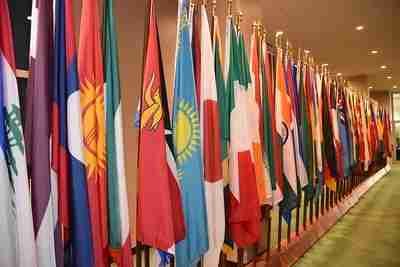7 April 2021, a US warship, USS John Paul Jones transited through India’s Exclusive Economic Zone (EEZ), when it sailed 130 nautical miles west of the Lakshadweep Islands. The event would have gone unnoticed had not the Pentagon issued a statement two days later that they “conducted innocent passage” without prior permission, an activity “consistent with international law”.
That statement set the cat amongst the pigeons creating waves in India’s strategic community, forcing the government to issue a response. The statement released by the Government of India stated: “The Government of India’s stated position on the United Nations Convention on the Law of the Sea is that the Convention does not authorise other States to carry out in the Exclusive Economic Zone and on the continental shelf, military exercises or manoeuvres, in particular those involving the use of weapons or explosives, without the consent of the coastal state.”
Considering the fact that ties between the US and India are increasingly getting stronger, the reason for the US carrying out a Freedom of Navigation Operations (FONOPS) in India’s EEZ, and publicly announcing the same, led to many theories and counter theories. But leaving that aside for the moment, let us understand what international law states and what Indian law has thus far mandated.
Provisions of UNCLOS
As per the United Nations Convention for the Law of the Sea (UNCLOS), every State has the right to establish the breadth of its territorial sea up to a limit not exceeding 12 nautical miles. The State exercises sovereign rights over its territorial sea, which extends to the air space above it, but subject to UNCLOS and to other rules of international law.
UNCLOS further states that ships of all States, whether coastal or land-locked, enjoy the right of innocent passage through the territorial sea.[1] What constitutes innocent passage has also been defined in detail.
With respect to a nation’s EEZ, the Convention limits the same up to 200 nautical miles. In the EEZ, the coastal state has exclusive economic rights. With respect to the rights of others, the Convention states: “In the exclusive economic zone, all States, whether coastal or land-locked, enjoy, subject to the relevant provisions of this Convention, the freedoms referred to in article 87 of navigation and overflight and of the laying of submarine cables and pipelines, and other internationally lawful uses of the sea related to these freedoms, such as those associated with the operation of ships, aircraft and submarine cables and pipelines, and compatible with the other provisions of this Convention”.

Article 87 states that the high seas are open to all States and they shall have freedom of navigation and freedom of overflight, laying of submarine cables etc.[2]
UNCLOS came into force in 1994 and India ratified the Convention a year later. The US recognises UNCLOS as a part of international customary law, but is not a signatory to the Convention. As per the US, in terms of the UNCLOS, USS John Paul Jones was merely exercising its right of passage as part of FONOPS. The US has been conducting such operations for decades, in accordance with the provisions of the UNCLOS, in furtherance of forcing compliance to a rules-based international order.
Maritime Zones of India Act
Indian law on the subject is coved by The Maritime Zones of India (MZI) Act of 1976, duly approved by the Indian Parliament. The Act states:[3]
(1) Without prejudice to the provisions of any other law for the time being in force, all foreign ships (other than warships including submarines and other underwater vehicles) shall enjoy the right of innocent passage through the territorial waters. Explanation:—For the purposes of this section, the passage is innocent so long as it is not prejudicial to the peace, good order or security of India.
(2) Foreign warships including submarines and other underwater vehicles may enter or pass through the territorial waters after giving prior notice to the Central Government: Provided that submarines and other underwater vehicles shall navigate on the surface and show their flag while passing through such waters.
With respect to the EEZ, the MZI Act states:[4]
In the exclusive economic zone and the air space over the zone, ships and aircraft of all States shall, subject to the exercise by India of its rights within the zone, enjoy freedom of navigation and overflight. However, the MZI Act also states:
The Central Government may, by notification in the official Gazette, (a) extend, with such restrictions and modifications as it thinks fit, any enactment for the time being in force in India or any part thereof to the exclusive economic zone or any part thereof; and (b) make such provisions as it may consider necessary for facilitating the enforcement of such enactment: and any enactment so extended shall have effect as if the exclusive economic zone or the part thereof to which it has been extended is a part of the territory of India.
There is a certain amount of ambiguity in the MZI Act with respect to India’s EEZ. The Act was formulated prior to the UNCLOS becoming part of international conventions. Evidently, India has made certain notifications in the official gazette with respect to the movement of foreign warships in its EEZ, which are in contradiction to the UNCLOS.
The dilemma
India has been advocating for free and open passage in the high seas and the EEZ forms a part of the High Seas. There is a contradiction in what has been mandated by notifications issued by the government of India and what India has signed as part of the UNCLOS.
From the American side, Jeff Smith, who specialises in South Asia as a research fellow in Heritage’s Asian Studies Center, tweeted that the US has regularly being carrying out FONOPS in Indian EEZ for over two decades. So, for the Americans, it is nothing new. India too was aware that the US has carried out such FONOPS earlier, but chose not to rake up the issue, presumably because it was in line with the UNCLOS.
India’s concerns with Chinese aggressive actions in Eastern Ladakh and in Arunachal Pradesh, match US concerns with Chinese attempts to impose unilateral maritime boundaries in the South China Sea and in the East Sea. Indo-US defence cooperation has been increasing and will only rise in the coming years.
The issue has been highlighted now, because of the tone and tenor of the US statement. The question that begs an answer is, why did the US government choose to make a public statement on the FONOPS carried out near India’s Lakshadweep Island, highlighting that it was “consistent with international law”. Did this statement imply that India’s position was not consistent with international law? And what impact will this have on the future of Indo-US relations?
India’s diplomatic response was mild, the intent being to downplay the incident. For the last decade or so, India’s strategic interests in the Indo-Pacific have increasingly converged with US interests and this has led to the completion of all four foundational agreements with the US. India’s concerns with Chinese aggressive actions in Eastern Ladakh and in Arunachal Pradesh, match US concerns with Chinese attempts to impose unilateral maritime boundaries in the South China Sea and in the East Sea. Indo-US defence cooperation has been increasing and will only rise in the coming years.
There have been a spate of high profile visits between the two countries. In October 2020, just a week ahead of the US Presidential election, U.S. Secretary of State Mike Pompeo and Defense Secretary Mark Esper visited India and met their counterparts Defence Minister Rajnath Singh and External Affairs Minister S. Jaishanker. Post the elections, the new US Defence Secretary, General Lloyd Austin visited India in March 2021, to discuss “deepening the US-India major defence partnership”.
Earlier in the same month, the leaders of the Quad countries, Prime Minister Modi, President Biden, Prime Minister Yoshihide Suga of Japan and Prime Minister Scott Morrison of Australia, held a virtual summit, signalling a strengthening of the Quad. Here, the leaders all made reference to a rules-based international order and free and open navigation on the high seas.
Motives
At a time when Indo-US interests are converging and the need to counter a hostile China require the Quad and other countries to unite against revisionist forces, what could have prompted the US to issue a press statement on its warship entering India’s EEZ as part of FONOPS? Some analysts have opined that it was a subtle message to India to not get too close to Russia. But that is unlikely. The US is aware of India’s dependence on Russia for a major part of its defence requirements.
It is Russia that has leased nuclear-powered submarines to India, the indigenous Brahmos missile, undoubtedly the best in its class in the world is a joint India-Russia venture and India has huge dependencies on Russia for defence equipment and spare parts. That is why India refused to foreclose the S-400 deal it made with Russia, despite the risk of sanctions.

It is unlikely that the US would be sending a subtle message to India to degrade its ties with Russia, for that will not happen. In any case, Indian foreign policy has, since 2014, de-hyphenated its dealing with foreign powers, so India-US ties are carried out independent of India-Russia ties.
Those analysts who opine that India would have to choose between the US and Russia are evidently out of sync with the manner in which Indian foreign policy is now being conducted. India is also not a pushover and would do what it perceives to be in its best interests.
It is more than likely, therefore, that the message is not for India but for China. The message reiterates a commitment to an open ocean policy on the high seas, of which the EEZ is a part. Free and open navigation is a stated policy of India, as oft reiterated by Prime Minister Modi, so in a larger sense, there is no conflict of interest between India and the US. However, China is making grandiose claims based on its 9-dash line which are clearly not based on law. Chinese actions in support of its unilateral agenda is belligerent and designed to bully their smaller neighbours into submission.
That is a path fraught with peril for world peace and hence must be contested. While Indian advisories need tweaking to conform with the provisions of the UNCLOS, the US on its part needs to show greater sensitivity while dealing with those with whom its strategic interests are aligned, for better cohesion and to enable a united and concerted response to nations that choose to disregard international conventions.
[1] https://www.un.org/depts/los/convention_agreements/texts/unclos/unclos_e.pdf,[2] Ibid,[3]https://legislative.gov.in/sites/default/files/A1976-80_0.pdf,[4] Ibid.


